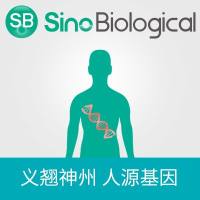Random Chromosomal Gene Disruption Using Cassette Mutagenesis
互联网
491
Random mutagenesis of DNA has been an essential tool for investigation of bacteria, fungi, and other organisms. Given the
recent explosion in genomic sequence information (e.g., over the past 5 yr there have been 30 published microbial genomes
and over 100 microbial genome sequencing projects), there is a growing need for reliable methods of random DNA mutagenesis
to allow for functional genomics work. The authors were studying Haemophilus influenzae
, the first organism to have its genome completely sequenced (1
). H. influenzae
is a Gram-negative facultative anaerobe, which resides in the human upper respiratory tract and causes disease. H. influenzae
is also capable of taking DNA from its environment and integrating it into the bacterial chromosome (2
,3
). A number of genes required for DNA transformation have been identified in H. influenzae.
These studies have used a variety of molecular methods to identify transformation genes, including complementation of transformation-deficient
mutants derived by chemical mutagenesis (4
), a “poison-DNA” selection method (5
), mini-transposon (Tn)10 mutagenesis (6
), Tn916
mutagenesis (7
), and other genetic selection techniques (8
). In order to identify the remaining transformation genes by insertional mutagenesis, while overcoming potential biases inherent
in Tn-based screens (e.g., hot-spotting), the authors decided to investigate the utility of the cassette mutagenesis protocol
(9
). In this procedure, an antibiotic-resistance cassette is ligated to restriction endonuclease-digested chromosome DNA, which
has been treated so that the original gene order is maintained during the process. The resulting cassette-mutagenized DNA
is then transformed into competent bacteria, resulting in the insertion of the cassette marker throughout the chromosome and
the generation of mutants by gene disruption.









